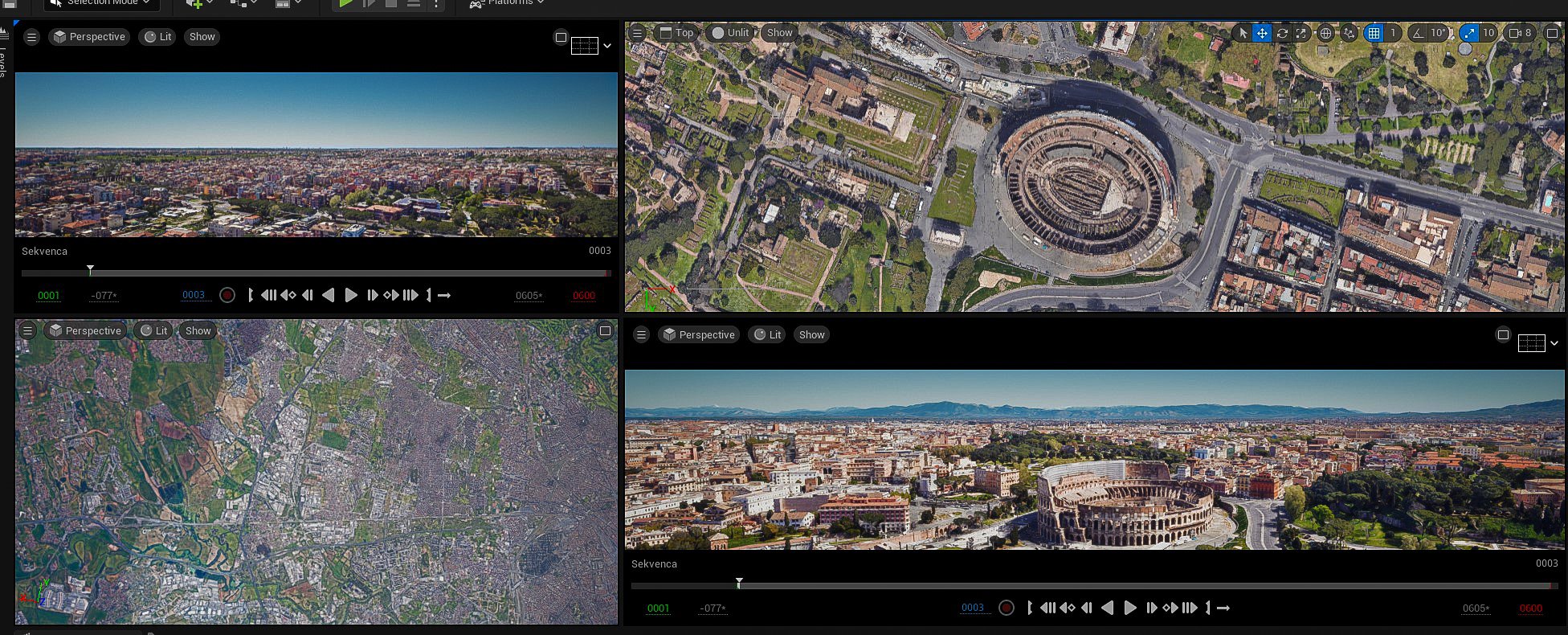Google Maps, Cesium, and Unreal Engine open up new possibilities for the Arch-Viz industry
Exciting times are ahead for 3D artists. Google Maps and Cesium are now integrating their environments directly into Unreal Engine. For those tackling extensive projects, you'll appreciate how crucial this is: visualize a client's development seamlessly in a real-world setting, especially when there's a lack of backplates. This collaboration will allow you to go after projects you wouldn’t even consider as you don’t have the capacity to create large-scale scenes or if you are a team that can tackle projects like this drastically reduce your project's timeline.
Take a moment to watch our informative video below. And if you're hearing about this for the first time, continue reading as we delve deeper into Cesium, Google 3D Tiles, and the capabilities within Unreal Engine.
Video Darkroom Studio
Unreal
Unreal Engine 5 (UE5) is a renowned game development engine utilized worldwide. Developed by Epic Games, it offers an extensive collection of tools for game development, simulations, and visualizations. What sets this platform apart is its exceptional flexibility, catering to both small indie teams and larger studios. Its versatility allows developers to breathe life into their visions seamlessly.
A hallmark of Unreal Engine is its cutting-edge support for real-time 3D content creation. This openness and advanced toolset position the engine as a leader in the creation of avant-garde content and interactive experiences. It's the go-to choice for industries that demand high-end visual effects, realistic simulations, and expansive virtual worlds. In a digital era where real-time 3D technologies are paramount, Unreal Engine shines.
In essence, Unreal Engine empowers creatives and professionals, enabling them to fabricate games and visual narratives that leave audiences in awe. It's a cornerstone in various industries, heralded as a supreme tool that paves the way for ambitious projects globally.
Cesium
Enter the 3D Geospatial Platform: Cesium. This platform, open by design, is engineered to maximize the benefits of 3D data. With the curated global content of Cesium ion, users can seamlessly integrate diverse 3D data, speeding up app development. Boasting some of the fastest tiling pipelines available, your content is smoothly streamed as 3D Tiles via Cesium ion, giving you complete data access autonomy.
Cesium for Unreal
"Cesium for Unreal," launched on March 30, 2021, brings the essence of 3D Earth to Unreal Engine. This plugin infuses Unreal with features reminiscent of Google Earth, unlocking a world of real-world simulation. Cesium for Unreal streams high-fidelity real-world 3D content — from detailed photogrammetry to 3D buildings. It introduces a precise, full-scale globe to Unreal Engine, laying the foundation for digital twins based on real-world benchmarks. Now, developers can sculpt digital realities grounded in genuine 3D content, capitalizing on Cesium's prowess to mirror the real world's vastness and intricacy in virtual settings. This integration extends to the Unreal Engine Editor, Actors, Components, and more, paving the way for immersive, authentic experiences.
Cesium and Google 3D Tiles
Cesium and the Google Maps Platform have united to unveil a photorealistic version of 3D Tiles. This innovation leverages the 3D Tiles standard of the open geospatial consortium, a brainchild of Cesium. Covering over 2,500 cities across 49 countries, this technology delivers a fluid 3D mesh mirroring the real world, enriched by sharp RGB optical imagery. It aligns with the 3D mapping foundations of Google Maps, designed to visualize both minute city blocks and expansive city panoramas.
In wrapping up, the collaboration between Google Maps and Cesium is a monumental step forward for 3D artists everywhere. Instead of dedicating countless hours to modeling and texturing environments, artists can now seamlessly incorporate their projects into lifelike settings using Unreal Engine. This union of technology not only saves invaluable time but also unlocks new horizons of creativity in the world of 3D visualization.





